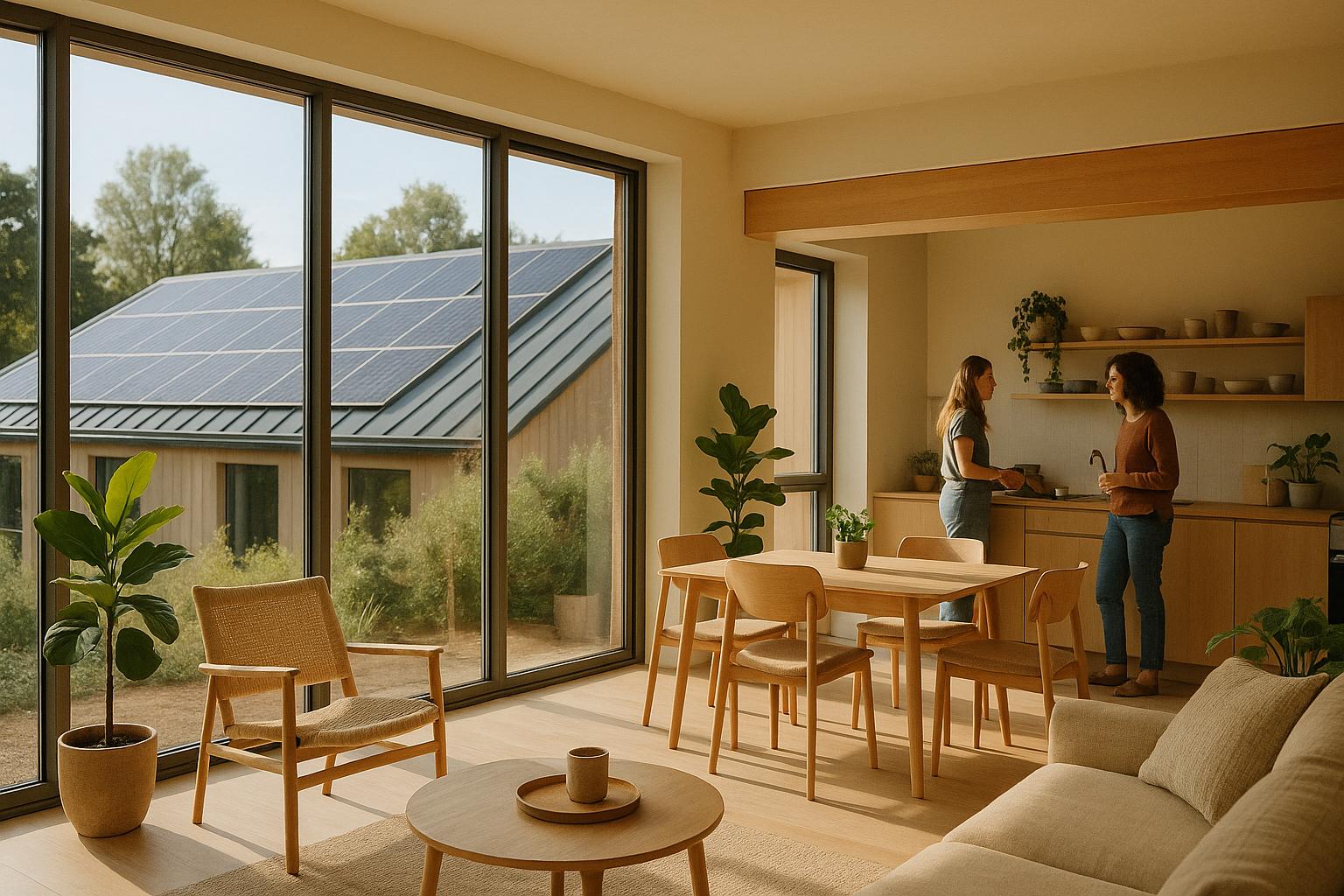Le paysage du logement urbain est en constante évolution, et la conversion des logements étudiants en espaces de colocation marque une tendance significative. Cette transformation s'adresse à un public plus large que celui des étudiants, notamment les jeunes professionnels, les nomades numériques et les travailleurs à distance à la recherche de solutions de vie flexibles et axées sur la communauté. À l'heure où les villes se développent et évoluent, la reconversion des logements étudiants en espaces de colocation offre une approche durable du développement urbain, répondant aux défis de l'accessibilité au logement, de l'isolement social et de la nécessité de disposer de modes de vie plus adaptables.
Leveraging Student Housing for Coliving Conversion
Les complexes de logements étudiants sont des candidats de choix pour les conversions en coliving en raison de leur conception existante, qui est axée sur la vie en commun et la communauté. Ces immeubles comportent souvent un mélange de chambres privées et d'espaces de vie communs, de cuisines et d'espaces d'étude, ce qui constitue une base solide pour la création d'environnements de colocation. Leur emplacement, généralement proche des établissements d'enseignement et des centres urbains, les rend attrayants pour les personnes à la recherche d'un mode de vie dynamique et connecté. Le processus de conversion peut donc se concentrer sur l'amélioration des équipements et la réorganisation des espaces communs afin d'attirer un public plus large.
Le parcours de la transformation : Du logement étudiant à la colocation dynamique
La transformation des logements étudiants en colocations implique une refonte stratégique pour répondre aux besoins et aux préférences d'une population résidente diversifiée. Il s'agit notamment de moderniser les unités d'habitation et les espaces communs et d'intégrer la technologie pour une vie intelligente et l'engagement de la communauté. L'objectif est de créer des environnements flexibles, confortables et interactifs qui favorisent un sentiment d'appartenance et de communauté parmi les résidents. Les espaces de colocation peuvent s'adapter à différents budgets, styles de vie et préférences en matière d'intimité en offrant diverses options de logement, des studios privés aux appartements partagés.
Répondre à la demande de logements urbains flexibles et abordables
Le passage à la colocation dans les anciens logements étudiants répond à la demande croissante de logements qui sont à la fois flexibles et abordables. Les espaces de colocation proposent des formules de location globales couvrant les charges, le mobilier et l'accès à des équipements communs, ce qui simplifie l'expérience de vie et apporte une certaine clarté financière. La flexibilité des baux répond à la nature transitoire des citadins d'aujourd'hui, qui peuvent rechercher des logements de courte durée en raison de changements de carrière, de voyages ou de préférences personnelles. Cette flexibilité, combinée à l'accessibilité financière de la colocation, fait de celle-ci une option attrayante pour de nombreuses personnes.
Créer des communautés urbaines dynamiques grâce à la colocation
L'un des principaux avantages de la conversion des logements étudiants en espaces de colocation est la possibilité de créer des communautés dynamiques et solidaires. Les opérateurs de coliving organisent souvent des événements sociaux, des ateliers et des opportunités de mise en réseau, encourageant l'interaction et la collaboration entre les résidents. Cette approche axée sur la communauté peut réduire considérablement la solitude et l'isolement, en favorisant un sentiment d'appartenance et de soutien mutuel. Les espaces de colocation offrent une communauté instantanée de personnes partageant les mêmes idées aux personnes souhaitant s'installer dans une nouvelle ville et développer leur réseau social.
Durabilité et partage des ressources dans les espaces de colocation
La conversion des logements étudiants en espaces de colocation s'aligne également sur les objectifs de durabilité. La colocation encourage l'utilisation efficace des ressources, réduisant ainsi la consommation globale et les déchets. Les colocations peuvent promouvoir la durabilité en mettant en œuvre des initiatives écologiques telles que des programmes de recyclage, des appareils électroménagers à haut rendement énergétique et des options de transport durable. En encourageant une culture de la responsabilité environnementale, les communautés de colocation peuvent contribuer aux efforts plus larges visant à créer des environnements urbains plus durables.
Surmonter les défis et embrasser l'avenir de la colocation
Si la conversion de logements étudiants en espaces de colocation offre de nombreuses opportunités, elle est également confrontée à des défis, notamment des obstacles réglementaires, des restrictions de zonage et des préoccupations de la communauté. Les conversions réussies nécessitent une collaboration entre les promoteurs, les urbanistes et les collectivités locales afin de garantir que les projets de colocation s'intègrent parfaitement dans le tissu urbain et contribuent de manière positive au quartier. Si ces défis sont relevés, les espaces de colocation peuvent devenir essentiels à la solution de logement urbain, en offrant des options de vie flexibles, abordables et orientées vers la communauté : Le rôle de la colocation dans les solutions de logement urbain
A mesure que les populations urbaines augmentent et que les besoins en matière de logement évoluent, la conversion des logements étudiants en espaces de colocation représente une solution avant-gardiste à plusieurs défis. En offrant des conditions de vie flexibles, abordables et axées sur la communauté, la colocation peut résoudre de manière significative le problème de l'accessibilité au logement, renforcer la connectivité sociale et promouvoir la durabilité. À mesure que cette tendance prend de l'ampleur, les espaces de colocation sont en passe de devenir une pierre angulaire de la vie urbaine, offrant un nouveau chapitre dans la façon dont nous envisageons le logement et la communauté dans nos villes.

























